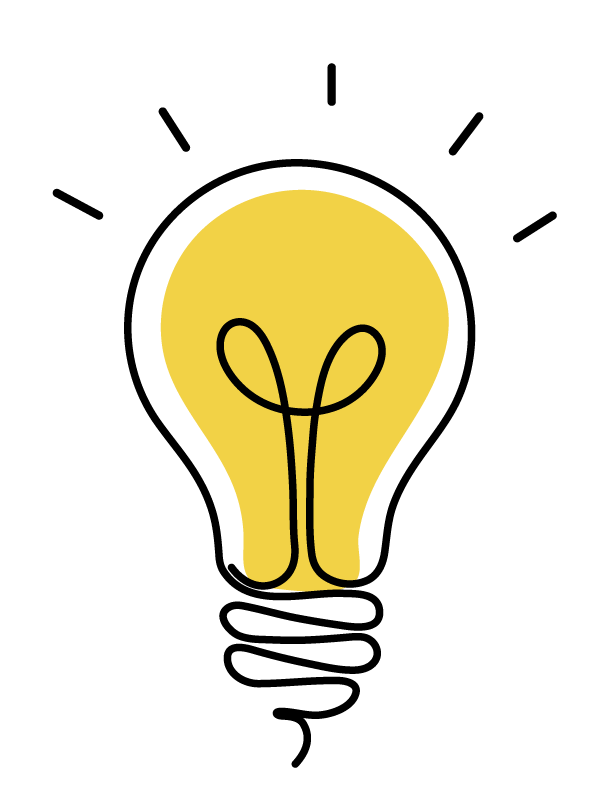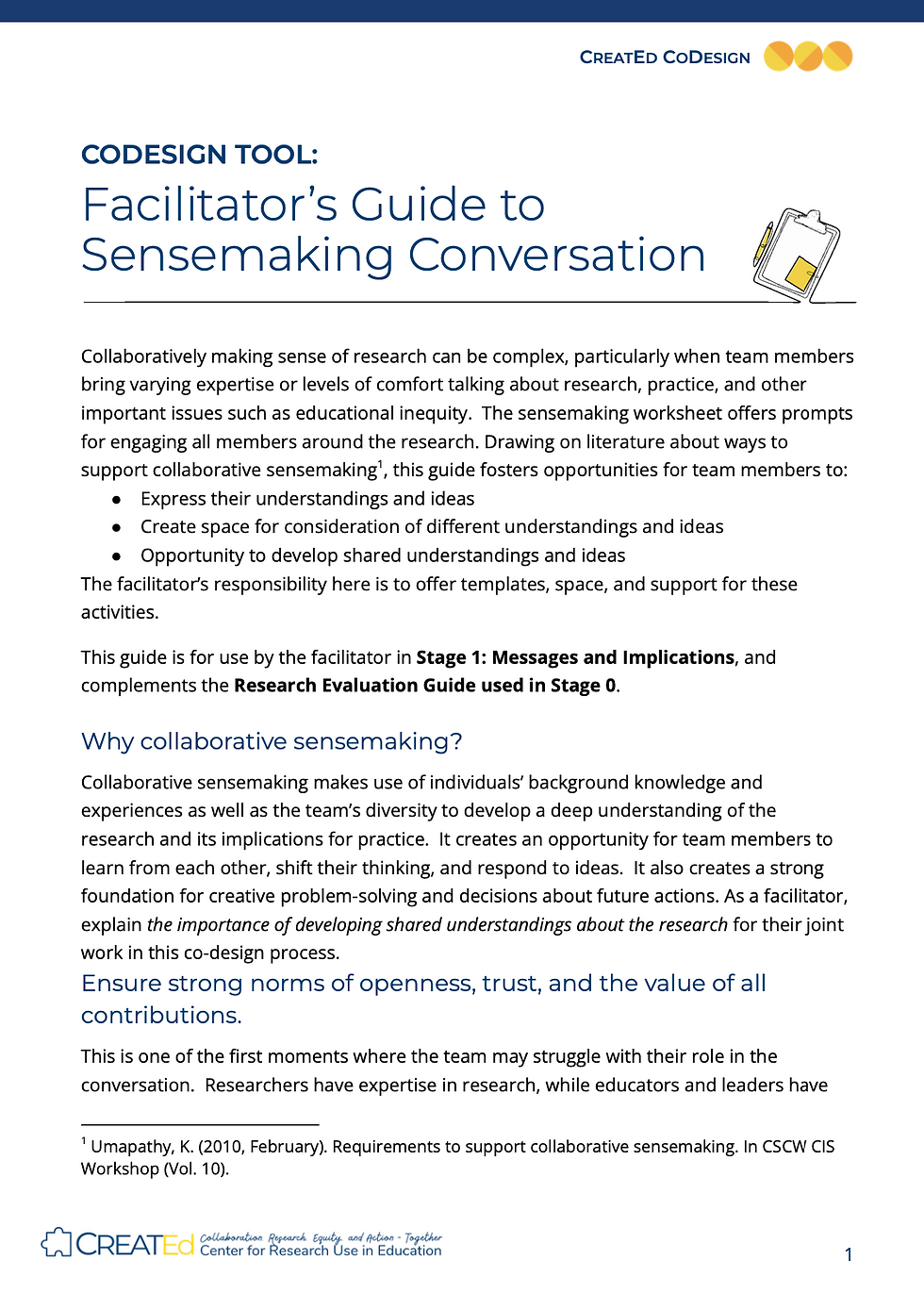This first stage of co-design involves collaboratively making sense of the research and its implications for educational policy or practice and for educational equity. This stage relies on the knowledge and experiences of the full team and requires that the facilitator engage the group in thinking critically about the issues in question, ensure that there are opportunities for everyone to contribute, and cultivate norms that ensure trust and openness as well as that value all contributions.
The end product of this stage is a set of messages and implications that inform product design in later stages of the build.

The goal:
Develop a shared understanding of what this research can contribute to policy/practice.
The participants:
Team Members:
Researcher(s), Facilitator, Practitioner(s)
Optional:
Designer
Depending on resources available, we recommend including a designer to listen in and/or ask questions that may be relevant to later design decisions. For example, the group discussion may identify implications for multiple audiences, and this background knowledge may be useful to the communications designer in Stage 2. However, there are likely costs associated with their participation that must be considered.
The deliverables:
-
Resource idea
-
Meeting notes
Tools for this Stage:
Suggested stage plan
Plan the meeting
-
Schedule a time that works for your team. Balance the time needed to work through the goal of this phase against availability and fatigue. We recommend a minimum of 105 minutes for this phase of the work, assuming all prework shared by the facilitator has been completed by the team.
-
Optional: Depending on the facilitator’s preferences, they may choose to share the Sensemaking Worksheet with the team in advance to prepare them for the conversation.
-
Prepare and share an agenda that lays out the purposes for the session, the anticipated outcomes, and the resources the team will use to achieve them.
SAMPLE:
Meeting Agenda
0:00-0:15 Introductions and overview of session
0:15-0:30 Team building activities
0:30-0:45 Setting norms and expectations
0:45-1:00 Reflections on research
1:00-1:15 Questions and concerns about research
1:15-1:35 Deciding on key messages and implications
1:35-1:45 Debrief, questions, and next steps
*Note that these times are minimum suggested times and many teams, particularly newly convened teams, may benefit from longer discussions of these issues.
Team building
This is likely your first team meeting, and it is important to begin to build trust, respect, and shared commitment to the work – key components of equitable relationships that are the foundation of co-design. These can be revisited at multiple points throughout the process to sustain and improve team dynamics. Furthermore, clarifying the norms for collaboration helps the team understand how to engage with others and contribute to the work. Thinking back to the Dimensions of Equity tool, norms are also one of the ways that underlying values for collaboration are expressed and enacted.
The Building and Supporting an Effective Team tool includes more details about supporting effective and equitable teams. Incorporate at least one activity designed for team building to set a positive tone for the meeting.
Making sense of the research
The core content of this meeting is to bring together the perspectives of researchers, practitioners, and policymakers who are present on the selected research.
-
Invite members to share their initial thoughts and reactions to the research. The researcher might share their motivation for conducting the research, the educator might share professional connections to the research, and so on. This can create a sense of shared commitment to the discussion. However, be cautious not to limit perspectives to assumed identities – researchers may have experience as practitioners and vice versa. Create a space to share all reactions.
-
Walk through the Sensemaking Worksheet to elicit various perspectives on the research.
-
Sensemaking Worksheet (all team members)
-
Facilitator’s Guide to Sensemaking Conversation (facilitator)
-
If helpful or needed, incorporate your Stage 0 resources for evaluating research, such as your copy of the Research Evaluation Guide
-
-
Come to a consensus on the most important messages and implications from the research that relate to policy and practice needs. Save these for future use.

PRO TIP
Be sure to attend to equitable participation. Watch for signals that team members are unsure of whether or how to contribute. Use strategies to elicit contributions from all team members, such as creating multiple ways to contribute ideas (e.g. verbal, written), take turns going first, make sure each member’s opinion is heard before making decisions or moving on, provide time or prompts for processing information, ensuring ideas are credited clearly to the first person to voice them, and explicitly valuing diverse or even unpopular opinions.

"Researchers go through several pages of like, ‘Here are all the caveats and discussion about why this might not be relevant or useful in some cases, or this was only like an RCT for ninth graders.’ So a few people on our team were like, ‘Can we extrapolate to high schoolers? Does it have to be for Latinx [students]?’ So we had a lot of conversations about how to translate that to the public."
Christina C.
FACILITATOR ON A CODESIGN TEAM
Wrapping up
The last step in this process is to ensure that the work is documented and available for the team to refer back to as needed. This includes saving a few minutes at the end of the meeting to debrief on the process, ask for final comments or questions, and to briefly communicate next steps.
After the meeting, the facilitator should:
Follow up with the team to share and confirm key messages, making revisions if needed.
File everything in the team’s management system.













